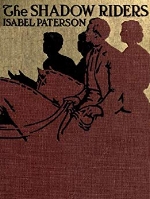through the eyes of writers
Calgary's Stephen Avenue circa 1907-1912 (Photo: Calgary Public Library Postcards from the Past)
A few of the books (and one essay) I talked about on my literary walk of Stephen Avenue during Historic Week Calgary. If you have others to add to the list, please send them my way.
J. Ewing Ritchie, Pictures of Canadian Life (1886) – This English author was one of the first literary tourists to spend time on Stephen Avenue. After a short stay among the cowboys and wild dogs, he determined “it is clear I must not tarry at Calgary too long.”
Rudyard Kipling, Letters to the Family (1908) – After a whirlwind tour down Stephen Ave, the man the Herald called “the greatest of all literary men” declared Calgary “the wonder city of Canada.”
Frederick Niven, Canada West (1930) & The Flying Years (1942) – This BC-based author captures the changing landscape of the street in two of his books about the Canadian West.
Bob Edwards, “The Eye Opener Road Race of 1906,” Eye Opener (Dec 25,1920) – The bard of early Calgary describes a drunken romp down Stephen Avenue with his special cocktail of fact and fiction. You can read the full version in Grant MacEwan's Eye Opener Bob: The Story of Bob Edwards.
Isabel Paterson, The Shadow Riders (1917) – In her first novel, Paterson draws upon her own experience as a single woman living in Calgary during the height of the pre-WW I real estate boom.
Marina Endicott, The Little Shadows (2012) – A travelling vaudeville sister act performs at the Starland Theatre, one door west of today’s James Joyce Pub.
Nancy Huston, Plainsong (1993) – Calgary-born, Paris-based Huston takes us curbside for the 1912 Stampede Parade, held on Labour Day weekend on 8th Avenue.
Yvonne Trainer, Tom Three Persons (2002) – This biographical poem about the legendary Kanai bronco champion from Standoff, AB also touches down on 8th Avenue during the first Stampede.
Doris Anderson, Rebel Daughter: An Autobiography (1996) – The one-time editor of Chatelaine grew up in a house where the W. R. Castell Library now stands, and writes about the Englishness of 8th Avenue during her 1920 and 1930s Calgary childhood.
Margaret Sadler Gilkes, Ladies of the Night (1989) – Post-war 8th Avenue and its surrounding blocks come to life in this memoir by one of city’s the first female beat cops.
Don McLeod, “Remembering Jaffe’s Book & Music Exchange,” Canadian Notes & Queries (Spring 2000) – McLeod recalls adolescent visits to this 8th Avenue literary landmark, demolished in 1980 to make way for the Performing Arts Centre.
Derek Besant & John Dean, EastEnd (2007) – Two Calgary artists explore the “sidewalk culture” of the 300 block of 8th Avenue in 1975, through a “cinemagraphic narrative” and black-and-white photographs.
Bruce Hunter, “The Many Happy Returns of Kenny Dawes,” Country Music Country (1996) – Set circa 1980, this short story travels the 8th Avenue of Hunter’s own Calgary adolescence and a landscape of “ghost buildings.”
Aritha van Herk, Restlessness (1998) – On a walking tour, the novel’s narrator points out a few key sites on Stephen Avenue to her assassin companion.
Lori Hahnel, Love Minus Zero (2008) – The legendary Long Bar at the Alberta Hotel makes a cameo appearance in Hahnel’s punk rock novel.
Stuart Ian McKay, Stele of Several Ladies (2004) – In this long poem, McKay haunts Stephen Avenue, past and present.
Katherine Govier, Between Men (1987) – Stephen Avenue circa 1889 winds its way through this novel about historic and contemporary Calgary.
Barry Callaghan, “A Sadness at the Heart of Calgary” (Saturday Night, Nov 1983) – In this essay, the Toronto writer picks a literary fight on a street he finds as soulless as the city.
John Ballem, Alberta Alone (1981) – The violence in Ballem’s political thriller was a lightning rod for Barry Callaghan. Ballem would go on to write several novels about the city’s oil patch informed by his front-row seat as an oil-and-gas lawyer. On a previous walking tour, someone told me that Ballem’s secretary typed his manuscripts in his Scotia Centre office high above Stephen Avenue.
Norman Ravvin, Café des Westens (1991) – Calgary-born Ravvin wrote his first novel set in and about 1980s Calgary in response to Callaghan’s claim that Calgary had no “imaginative shape.”








